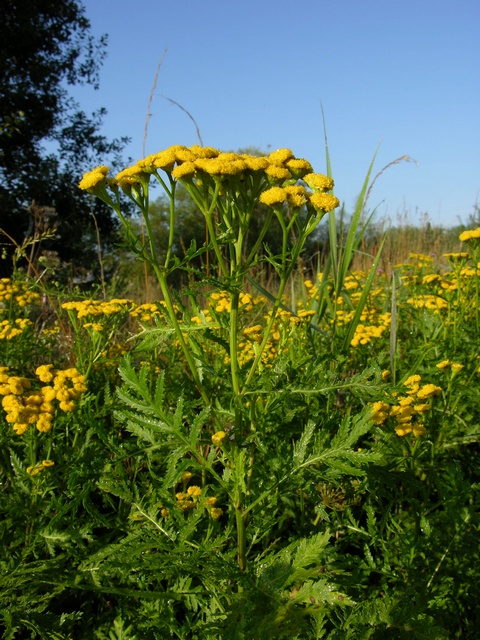Perennials [annuals, subshrubs], 5-150 cm (usually rhizomatous; usually aromatic). Stems 1 or 2-5+, erect or prostrate to ascending, branched proximally and/or distally, glabrous or hairy (hairs basifixed and/or medifixed, sometimes stellate). Leaves basal and/or cauline; alternate; petiolate or sessile; blades mostly obovate to spatulate, usually 1-3-pinnately lobed, ultimate margins entire, crenate, or dentate, faces glabrous or hairy. Heads usually radiate, sometimes disciform (or quasi-radiate or -radiant), usually in lax to dense, corymbiform arrays, rarely borne singly. Involucres mostly hemispheric or broader, (3-)5-22+ mm diam. Phyllaries persistent, (20-)30-60+ in (2-)3-5+ series, distinct, ± ovate to oblong or oblong to lanceolate or lance-linear (sometimes carinate), unequal, margins and apices (pale to dark brown or blackish) scarious (tips sometimes dilated). Receptacles flat to conic or hemispheric (sometimes hairy), epaleate. Ray florets usually 10-21+ (pistillate and fertile or neuter; corollas pale yellow to yellow or white, usually with yellowish bases [pink], laminae oblong to flabellate), sometimes 0 (in disciform or quasi-radiate or -radiant heads, peripheral pistillate florets 8-30+; corollas pale yellow, ± zygomorphic, lobes 3-4, sometimes ± raylike). Disc florets 60-300+, bisexual, fertile; corollas yellow, tubes ± cylindric, throats narrowly funnelform to campanulate, lobes (4-)5, ± deltate. Cypselae obconic or ± columnar (circular in cross section), ribs (4-)5-10(-12+), faces usually gland-dotted, sometimes glabrous (pericarps without myxogenic cells or resin sacs, embryo sac development tetrasporic); pappi usually coroniform, rarely 0 [distinct scales or each pappus an adaxial auricle]. x = 9 (polyploidy).
Much like Chrysanthemum, but the heads disciform or nearly so, the outer fls pistillate, with short tubular cor which in some spp. is expanded into a short yellow ray, or the pistillate fls rarely wanting; disk-fls 5-toothed, yellow; achenes mostly 5-ribbed or -angled, commonly glandular; lvs pinnately dissected to rarely entire. 50, N. Hemisphere.
Gleason, Henry A. & Cronquist, Arthur J. 1991. Manual of vascular plants of northeastern United States and adjacent Canada. lxxv + 910 pp.
©The New York Botanical Garden. All rights reserved. Used by permission.





